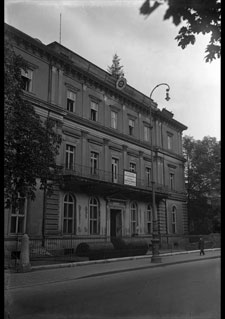Nazi Centers of Power
The NSDAP arose out of a rejection of the Weimar Republic’s democratic und parliamentary party system. It tended to see itself as a grassroots “movement” rather than as a political “party”.
The NSDAP was structured broadly enough to encompass as many domains of private and public life as possible and imbue them with the spirit of the Nazi ideology. The “overall Nazi movement” was divided into the “political organization” (P.O.), sections and affiliated associations as well as supervised organizations. The depth and breadth of the Party’s level of organization was aimed at total control of the German populace.
The NSDAP was a profoundly heterogeneous construct that constantly wavered between Party and government, between nationwide presentation and local presence of the Nazi claim to power, between the administrative work of a mass party and the revolutionary claim of a grassroots movement.
Nazi authorities counteracted this by developing dual power centers: Although the center of national power shifted to Berlin when the NSDAP took over the government in January of 1933, the national leadership remained in Munich with the Party headquarters in the “Brown House” and other important agencies. Munich thus remained the counterpart of the seat of government in Berlin.
All in all, the selection of sites as locations of individual agencies did not follow any comprehensive system. Rather, the influence of the particular office holder frequently tipped the scales. Abstract terminology, referring to “Reich leadership” on the party level as equivalent to the “Reich government”, was chosen deliberately to suggest a unity outwardly, which never existed in the party internally. Without question, the “Führerprinzip” in particular served a compensatory function.
When governmental agencies and ministries endowed with intense political lives of their own are added, the diverse structure of “the” Nazi power structure becomes recognizable. The development of individual political domains, such as the Nazi’s religious and church policy for instance, was frequently the outgrowth of not only a strategic aim but also a confusing tangle of disparate interests and contradictory influences.

